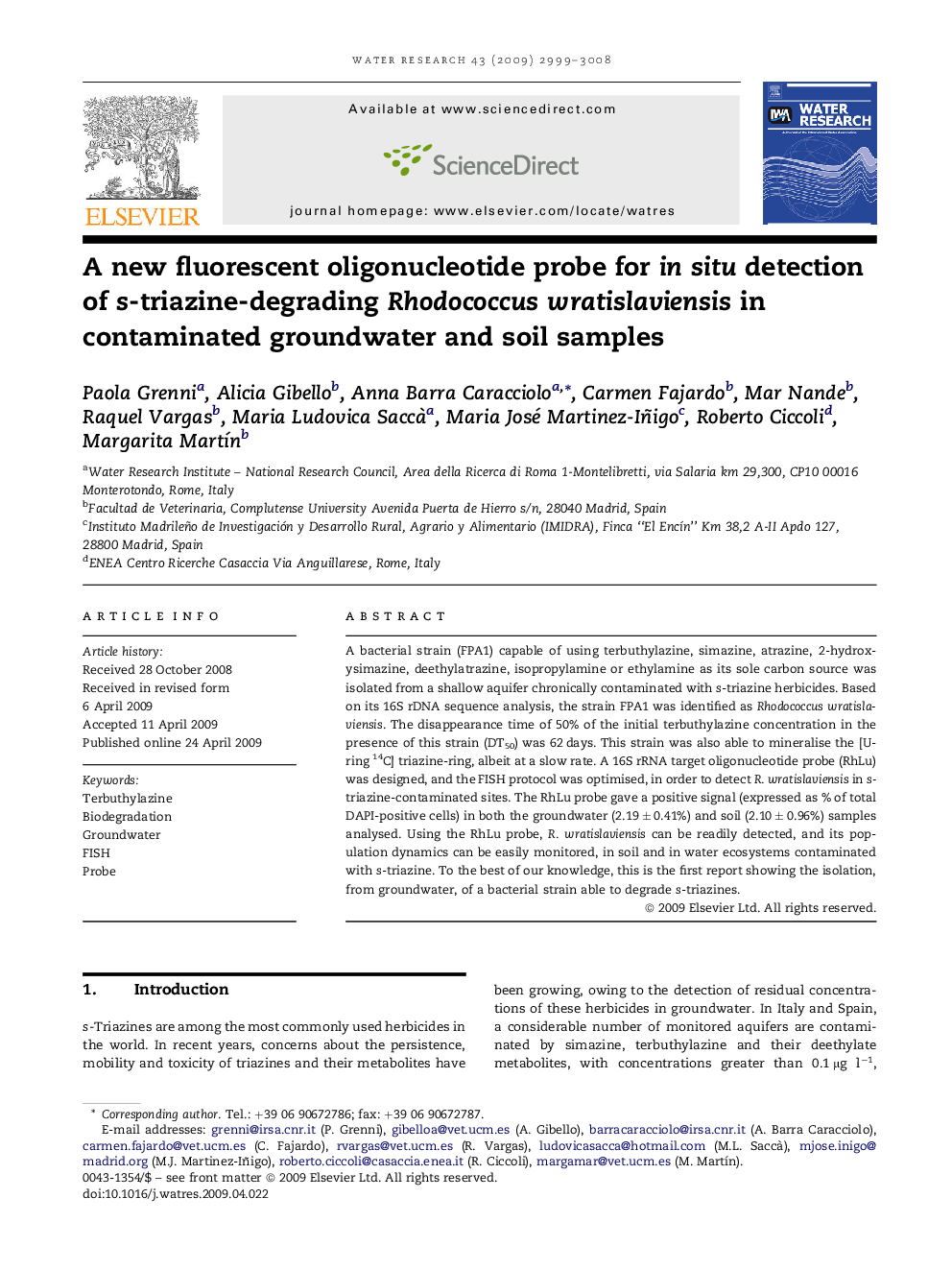| Article ID | Journal | Published Year | Pages | File Type |
|---|---|---|---|---|
| 4482960 | Water Research | 2009 | 10 Pages |
A bacterial strain (FPA1) capable of using terbuthylazine, simazine, atrazine, 2-hydroxysimazine, deethylatrazine, isopropylamine or ethylamine as its sole carbon source was isolated from a shallow aquifer chronically contaminated with s-triazine herbicides. Based on its 16S rDNA sequence analysis, the strain FPA1 was identified as Rhodococcus wratislaviensis. The disappearance time of 50% of the initial terbuthylazine concentration in the presence of this strain (DT50) was 62 days. This strain was also able to mineralise the [U-ring 14C] triazine-ring, albeit at a slow rate. A 16S rRNA target oligonucleotide probe (RhLu) was designed, and the FISH protocol was optimised, in order to detect R. wratislaviensis in s-triazine-contaminated sites. The RhLu probe gave a positive signal (expressed as % of total DAPI-positive cells) in both the groundwater (2.19 ± 0.41%) and soil (2.10 ± 0.96%) samples analysed. Using the RhLu probe, R. wratislaviensis can be readily detected, and its population dynamics can be easily monitored, in soil and in water ecosystems contaminated with s-triazine. To the best of our knowledge, this is the first report showing the isolation, from groundwater, of a bacterial strain able to degrade s-triazines.
